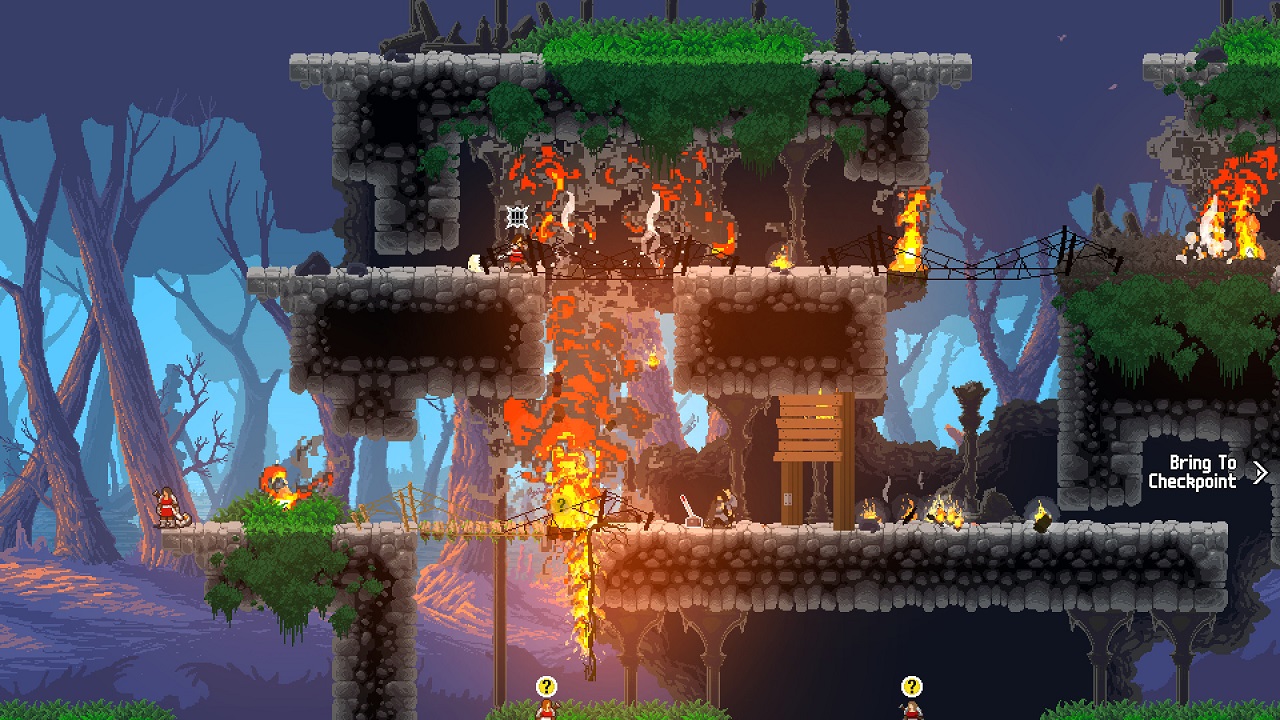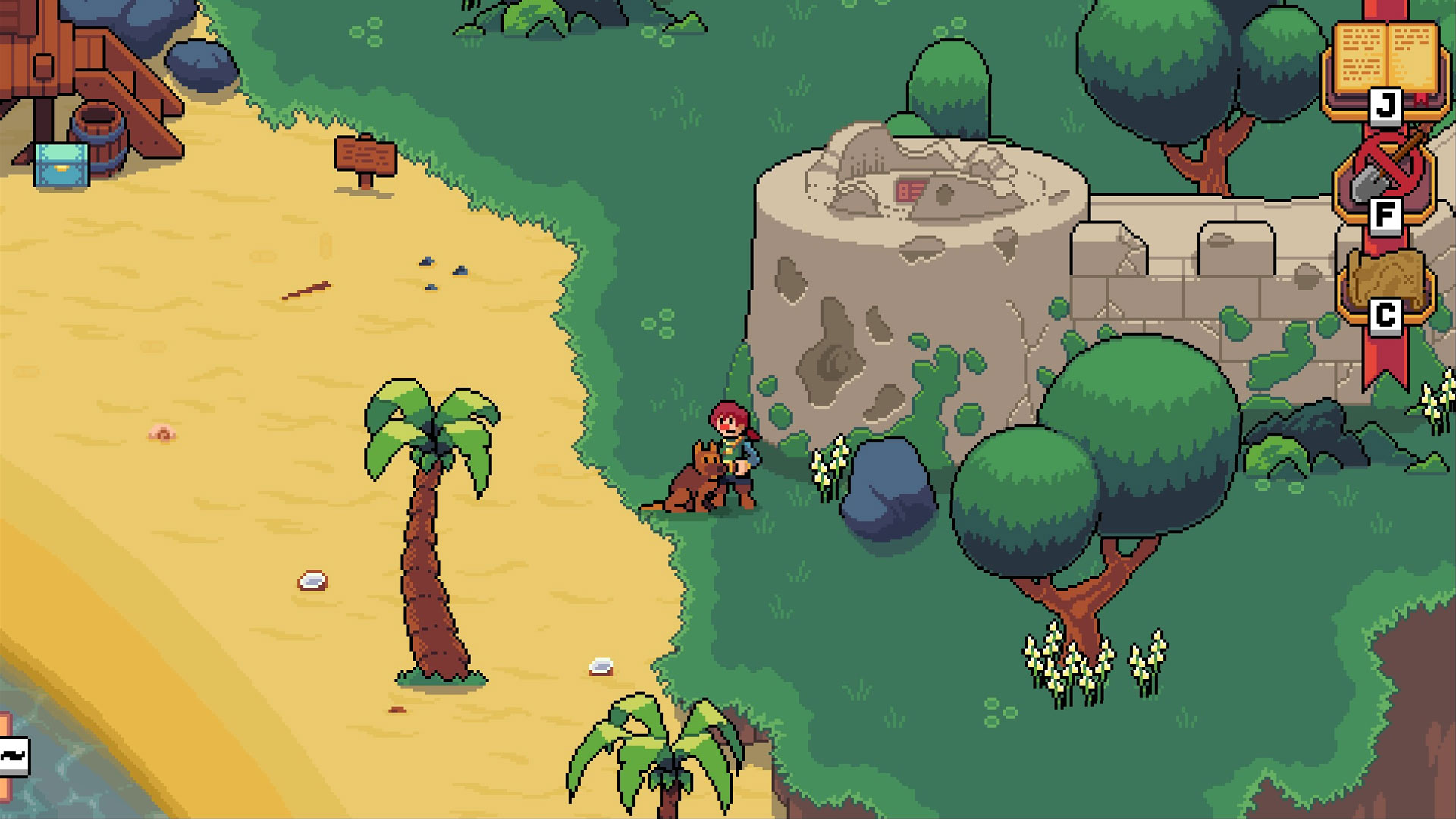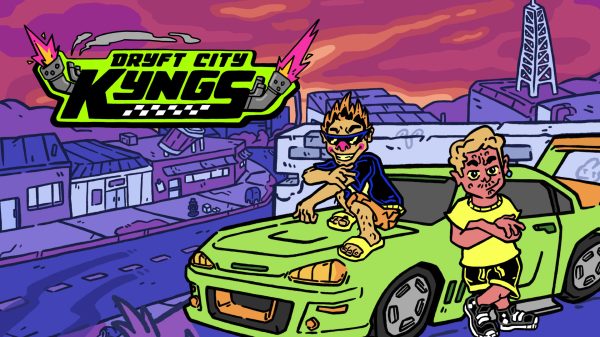Tasmania is home to some of Australia’s most picturesque natural beauty. One such area is the Derwent Valley, which is located in the south of Tasmania, about an hour north of Hobart. Here, on a block of six acres, Luke Webster is gearing up to release his first console and PC game – Bilkins’ Folly, a treasure-hunting adventure inspired by the Zelda games of yore.
There’s something about Webster that makes you believe he’s not afraid of a day’s hard yakka. After all, Webster tells me that he’s got some sheep roaming about the place and that he’s just started renovating his bathroom because he needed something to do.
A former high school teacher of 15 years, Webster says his first memories of video games were playing the Atari with his cousins and playing a particular game that was incredibly terrible on that platform, although he doesn’t remember the title. Yet despite that, he was captivated by how video games worked.
“I’d go into the newsagency or wherever you’d go to get magazines from back then and I’d look at the magazines for video games – I’d sit there for about half an hour just looking at all the pictures fascinated by it.
As a kid, Webster knew he wanted to make video games, but says that they didn’t have a computer at home until his parents caved and bought him an Amiga 500.
One game he does remember playing was Dragon’s Lair, which featured art by Don Bluth. Webster reveals that twice a year he was able to get a game – his birthday and Christmas. Webster was obsessed with Dragon’s Lair’s box art, which made him feel like he just had to have it.
“We complain about prices of games going up these days but back then they were $100–$110, and if you bought one you didn’t like, tough luck,” says Webster.

Luke Webster and real life Drayton
With some money that Webster had saved up, he was able to buy Dragon’s Lair, however it was a purchase he would remember for the wrong reasons.
“It was like playing a cartoon, which to a kid is just amazing. But then you start playing the actual game and the gameplay is horrendous,” laughs Webster.
“I didn’t have many games because games are expensive, so I am just going to keep playing this crap game.”
Despite these issues, Webster’s desire to make video games grew, and he shares a story about a guy that he met who offered to help him get started making games on the Amiga 500, an offer that Webster accepted. He was then given this thick manual to read and the guy said, “Once you finish this one I’ll give you the second one.”
“I went away and started reading this, and I think I got two pages in and it was like reading a different language – I had no idea what I was reading. So I gave up – I thought I don’t think I can do this,” explains Webster.
It wasn’t until years later when an abundance of resources became available that Webster believed that making video games was possible again.
So how did Webster turn his career path back towards video games?
“I always enjoyed doing art and drawing and illustration,” says Webster.
“About eight or nine years ago I was chatting with a guy called Dan Hindes, who at the time was doing the Sneaky Bastards thing, and he was talking about making a game (which would become Wildfire) and I was like “Oh mate, do you need an artist?”
“I sort of insisted that I should be the one do art on that and eventually convinced him that I could do that job.”

Wildfire
I went from being a history and English teacher to teaching IT and game development and I just loved it
Webster says that an opportunity opened up at the high school where he was teaching that allowed him to fuse his occupation with his game dev work on the side. The teacher who was in charge of IT was running a game development course and he departed the school. Webster went to the powers that be and explained that he was involved in game development and that he’d be interested in taking over the course.
“I went from being a history and English teacher to teaching IT and game development and I just loved it,” proclaims Webster.
“I got the bug and I just started learning all the toolsets, and went from a point where I was just doing the art for Wildfire to thinking I’d really love to code my own games and tell my own stories. I was able to take what I was teaching the kids about the fundamentals of programming and game design and apply it to my own stuff.”
But like all of us, Webster has his passions and dreams, and a few years ago he decided to leave his teaching job and give game development a red-hot crack, something he credits his wife for giving him the chance to do so.
His first attempt at coding was a mobile platforming game titled Cracked Crusader, before starting on Bilkins’ Folly about three years ago. However, it was during his time teaching that Webster learned some fundamental skills around game design.
Although Webster taught game development to high school students, he has no formal qualifications, instead, he learned what he needed to know and teach during his time developing Wildfire, which was made with the Game Maker engine.
“I sort of started going into this pattern of using the Construct 3 engine (which is what Bilkins’ Folly is made in), then we’d do a bit of Game Maker and a bit of Unity, like as a progression.
“For high school students, the majority of it just ended up being in Construct, because it’s a really easy tool for beginners and you can do enough with it to make fairly powerful games. The first mobile game I did was more a response to the students because they kept asking me, ‘We’re using this Construct program but we can’t see many games that are made with it, is it worth learning this?’”
When the development for Bilkins’ Folly began three years ago, Webster prototyped the game in both Construct 3 and Game Maker but says that using Construct 3 was far more time efficient.
“I had the core mechanics of the game put together in about a day,” explains Webster.
From there, Webster says it was simply a matter of sticking with what he knew best. By this stage he’d taught with Construct 3 for about four years, so it was familiar. However, the downside is that in comparison to some of the more popular engines, Construct 3 doesn’t have a large user base. But on the flip side, the community is tightknit and there’s always someone willing to help whenever a problem arises.
A self-confessed “dumb arse,” Webster admits that for him to learn something he needs to be practising it and using it all the time, and teaching the Construct 3 engine helped reinforce his knowledge.
“I don’t pick things up easily – it’s been a bit of a struggle from my own personal ability to learn these tools.”
For Bilkins’ Folly’s vibrant pixel art, Webster got a lot of reference images from games that he liked the style of, such as Stardew Valley, The Legend of Zelda: Link’s Awakening, The Legend of Zelda: A Link to the Past, and Secret of Mana. But the main contributing factor was a colour palette that Webster found that he liked.
“One thing I had to be strict on was standardising the style,” explains Webster.
“I was looking at Stardew Valley, Zelda, and Secret of Mana, and even though they’re all pixel games, they’re all different styles. So I had to be really strict on if I am going draw one object this way then every single object has to be drawn in the same style.
Webster reveals that initially he was playing around with an illustrated style that resembled a children’s book but says that it didn’t look very good and it would have caused performance issues as Construct isn’t a performance engine.
“It was a lot testing early on and then locking in once I was happy with and just running with it.”

Bilkins’ Folly concept art
Despite using Construct 3 for Bilkin’s Folly, Webster says he wouldn’t use it again when it comes to a major project as it has its limitations when it comes to performance. Another challenge is that there are only two studios in the world that can port Construct 3 games to consoles, with both constantly flat out.
For his next game, Webster says he wants to do a 3D game but is unsure which engine to go with. He’s played around with Unity, but all the furore surrounding the company after it recently changed its terms of service (which it later walked back to some extent), has made him cautious, and he hasn’t ruled out using Unreal yet.
A unique aspect of Bilkins’ Folly is its use of cartography as a gameplay mechanic, something which Webster says came about as a result of his love for maps, whether it’s drawing them or reading them.
“Things like Lord of the Rings as a kid I’d pick up and just look at the map – I’d just stare at it and study it.”
It was something he incorporated into his teaching as well while at primary school, revealing that he would make maps with puzzles and bring them to class for the kids to solve during maths and geography.
While maps are a common feature in video games, they’re seldom used when it comes to gameplay mechanics, which is one of the reasons why Webster wanted to include them in Bilkins’ Folly. And it makes sense given it is a game about treasure hunting, but Webster says the mechanic is a much simplified version of cartography that was made to feel “achievable for players.”
Webster may be the lead developer on Bilkins’ Folly but he’s had help from others for some areas of the game. Jamal Green is the game’s composer, and his introduction to the project was very similar to how Webster got the gig on Wildfire. He joined about six months into development after reaching out to Webster on Twitter (now X), but initially Webster was a little sceptical and thought it was too early to be taking on a composer.
“You do get a lot of people messaging you and they don’t even make reference to the game – it’s just generic. But I always make a point of checking out people’s profiles, and I checked out some of his music and it was pretty good music – I really like what he’s done, so I told him that we would talk later.”

Percy Bilkins was originally named Percy Biggins
Even though Webster didn’t have a publisher or any money to spend, Green was very keen to be involved. Webster says that he would never bring someone on with the promise of maybe making money because “that’s not how I work.” Regardless, Green was insistent, and in the end Webster agreed to let him make music for the game, with his first track becoming the game’s menu music.
After Webster secured a publisher he was able to pay Green for his efforts, but that’s not the only source of funding that Bilkins’ Folly has received, with Screen Australia supporting the game via its Games: Expansion Pack grants. This funding allowed Webster to bring on an animator and a sound designer, with Webster recruiting both roles from his homeland of Tasmania.
Early on, Webster knew that he wanted to partner with a publisher on Bilkins’ Folly after the experience of working on Wildfire, which Webster says “dragged on because they all had full-time jobs.”
It was also causing Webster’s wife concern for his wellbeing, believing that he was spreading himself too thin between teaching and developing Wildfire, while trying to make time for his family as well.
“Time becomes a real issue when you’re trying to do the indie dev thing with a job and a family, you don’t have a lot of time for anything else,” says Webster.
Webster says he made a promise to his wife that if after one year of prototyping Bilkins’ Folly he couldn’t find a publisher he would walk away from game development. She agreed to the terms of the promise.
“I need to have a life, I can’t go from work to home to working on the computer and then back to work, that can’t be my life,” Webster states.
Social media played a big part in Webster and Armor Games partnering up, with Webster gaining traction by posting as part of #ScreenshotSaturday. Webster paid attention to who was interacting with his posts, and one day noticed that Sean McKenzie from Armor Games had retweeted his post. Webster then made contact with McKenzie, asking if Armor Games would be interested in hearing a pitch about Bilkins’ Folly, which they were, and they eventually made an offer. But they weren’t the only ones, with Webster revealing he had three offers to choose from, however Armor Games was the best fit for Webbysoft and Bilkins’ Folly.
Time becomes a real issue when you’re trying to do the indie dev thing with a job and a family, you don’t have a lot of time for anything else
Now that he’s only focused on developing Bilkins’ Folly, Webster says his wife has noticed a big change and is pleased to see her husband much happier – saying that he is like a different person.
“I can take a step back every now and then and breathe and relax,” explains Webster.
“We can go places because I am not feeling like I am constantly having to beat this demon of time that’s always lurking over us. It takes so much away from your livelihood if you’re trying to do full-time dev and full-time work at the same time.”
Webster says even if he was financially independent, he would always be looking to partner with a publisher because “it does make such a huge difference.” Especially when you consider all the things they handle behind the scenes, things that Webster says he wouldn’t have even thought of.
Throughout the development of Bilkins’ Folly, Webster was working 10–12-hour days, seven days a week on average. He does admit that there were times when deadlines were approaching and he had to put in some bigger shifts, but ultimately, excessively long days aren’t sustainable for productivity.
While Webster says he has a couple of ideas for his next game, he isn’t committing to anything until after Bilkins’ Folly is released, so he has a clearer picture of what his financial future looks like.
“It could flop and I’ll be back teaching to make ends meet or it could do above what I expected and I am financially free to do whatever I want.”

Percy and Drayton
With Bilkins’ Folly on the verge of release, Webster has said the process has been relatively easy given he’s had experience with Wildfire and that the publisher has helped a lot.
“I heard a really good quote years ago and I think adhered to it and it’s, ‘surround yourself with people who are smarter or better than you’ and that’s what I’ve done,” says Webster.
“I signed with a publisher that’s done it all and there’s people who have better experience than me and I defer to them.”
Regardless of what happens with Bilkins’ Folly, Webster’s story is just another chapter in the book of many indie devs who have put it all on the line to pursue their dreams, and like many, Webster’s journey is only just getting started and we can’t wait to see what the future holds for Webbysoft.
Despite a childhood playing survival horrors, point and clicks and beat ’em ups, these days Zach tries to convince people that Homefront: The Revolution is a good game while pining for a sequel to The Order: 1886 and a live-action Treasure Planet film. Carlton, Burnley FC & SJ Sharks fan. Get around him on Twitter @tightinthejorts





























